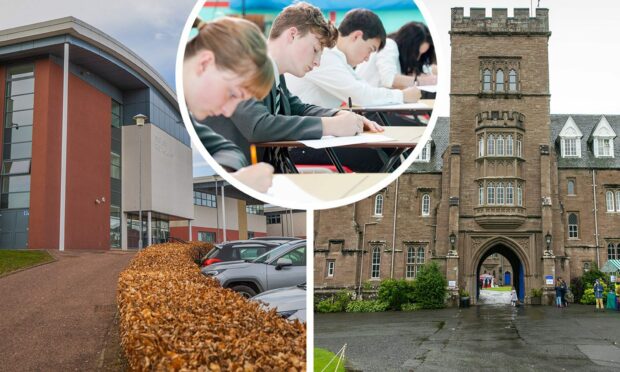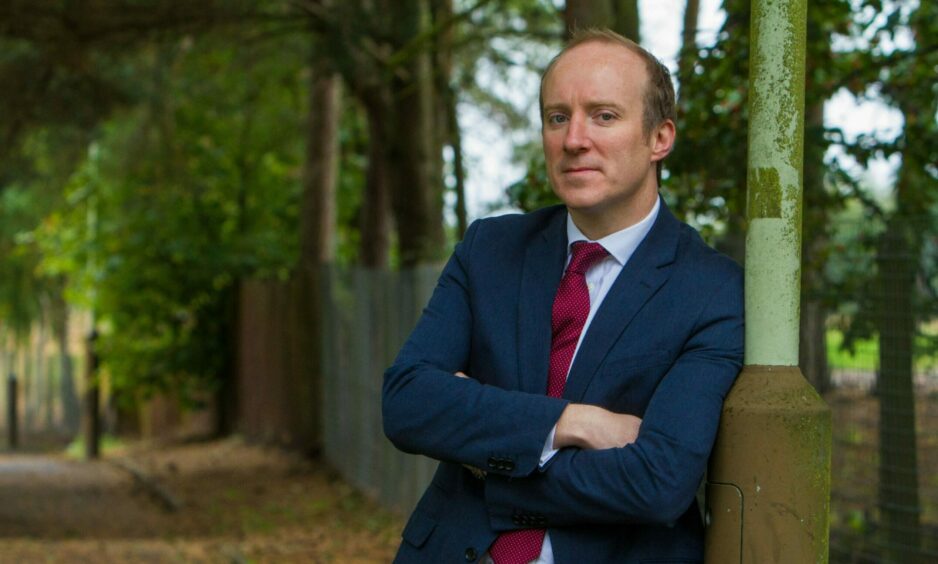More than one in 10 exam results from Tayside and Fife schools were appealed last year.
And less than a third of those challenges resulted in a better mark for young people – but some schools had far greater success in appeals than others.
Overall 11% of National 5, Higher and Advanced Higher results at 51 local authority and independent schools across Dundee, Angus, Fife and Perth and Kinross were appealed in 2022 and 31% of those were successful.
But in what was described as “deeply alarming” disparity, the proportion of results from individual Tayside and Fife schools appealed ranged from 43% to 4%, and the success rate varied widely, from 61% to 12%.
Pupils were able to appeal results to the Scottish Qualifications Authority themselves or through their school free of charge where their teacher-estimated grade was higher than their exam grade.
The SQA released data on appeals for each school in response to a freedom of information request made by James McEnaney for The Herald.
We have analysed that data for Tayside and Fife and you can find out how many 2022 exam results from each local school were challenged and with what success in our table further down.
Independent Glenalmond College, in Perthshire, submitted the greatest proportion of appeals, challenging 43% of its 60 results, mostly in Highers.
But it also had the lowest success rate, at only 12%.
At the opposite end of the scale, St Paul’s Academy in Dundee had the highest proportion of successful appeals – 61% – but challenged among the lowest proportion of results, at 6%.
How did your school do in exam appeals 2022?
Education spokesperson for Scottish Labour and Dundee MSP Michael Marra accused the SQA and Scottish Government of blundering through exams, with real-life impact on young people.
He said: “We know that exam chaos over the past few years has baked in inequality and punishes poorer pupils simply for being poorer.
“In this context, the difference in appeal success is deeply alarming and pupils across Tayside and Fife have once again been left with a process that they can have no confidence in.
“If we are to rebuild that pupil and public confidence it can only be done by designing and implementing a transparent system that gets rid of the clear bias that currently exists against pupils and schools deemed unworthy of good grades.”
To determine appeals SQA appointees reviewed SQA coursework and alternative assessment evidence submitted by the school.
For an appeal to succeed the SQA said this evidence had to be consistent with national standards for a higher grade.
A spokesperson said: “To ensure fairness to all, senior subject specialists – teachers and lecturers – did not know learners’ exam grades or estimates.
“Their job was to independently determine the appropriate grade that the evidence represented.
“As in previous years, some variability was expected between the number of upgrades across subjects and levels, as well as the proportion of entries appealed by course, and this can be seen in the school-level data.
“Overall learners engaged strongly with SQA assessments this year, with 81% of entries awarded their estimate or higher.”
The SQA said this year’s appeal service will be different, with learners able to request a review of marked exam papers.












Conversation